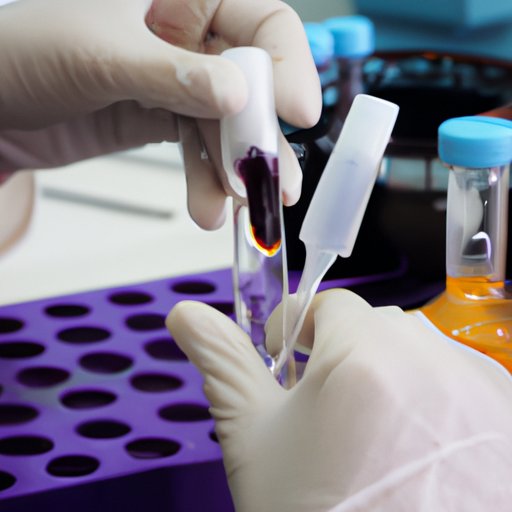Introduction
Control is an essential part of the scientific method. It is a process used to ensure that variables are kept constant in order to accurately measure the effects of an experiment or study. In other words, it is a way to make sure that only one factor is changed while all other factors remain the same. This helps scientists understand the cause and effect of their research and draw accurate conclusions.
The purpose of this article is to explore the basics of control in science, the role of control in scientific experiments, the different types of controls used in the scientific method, and the impact of control on scientific research results.
Exploring the Basics of Control in Science: What is it and How Does it Work?
Control is a process used in scientific experiments to maintain the integrity of the results. It is used to ensure that any changes in the results are due to the variable being tested, and not due to any other external influences. This allows scientists to draw accurate conclusions about their experiments.
In order to understand how control works in science, it is important to understand the different types of controls used in experiments. These include positive and negative controls, active and passive controls, and internal and external controls.
The Role of Control in Scientific Experiments: A Comprehensive Guide
Control is essential for obtaining valid results from scientific experiments. It helps to eliminate any outside influences that may affect the results, which can lead to inaccurate conclusions. There are many benefits of using control in experiments, such as eliminating bias and ensuring accuracy in results.
On the other hand, there are also potential pitfalls of not utilizing control in experiments. Without control, scientists may draw false conclusions from their experiments, as they will not be able to accurately determine the cause and effect of their research. Therefore, it is important to use control in experiments in order to obtain reliable results.

Examining the Different Types of Controls Used in the Scientific Method
When conducting experiments, scientists often use different types of controls to ensure the accuracy of their results. These include positive and negative controls, active and passive controls, and internal and external controls.
Positive and Negative Controls: Positive controls are used to verify that the experiment is working properly, while negative controls are used to compare the results of the experiment with no change. For example, in a medical experiment, a positive control would be a sample that has been treated with a drug, while a negative control would be a sample that has not been treated with the drug.
Active and Passive Controls: Active controls are used to actively affect the results of an experiment, while passive controls are used to observe the results without affecting them. For example, in a chemical experiment, an active control would be a sample that has been exposed to an acid, while a passive control would be a sample that is not exposed to the acid.
Internal and External Controls: Internal controls are used to monitor the progress of an experiment, while external controls are used to compare the results of the experiment with a standard. For example, in a biological experiment, an internal control would be a sample that is monitored throughout the experiment, while an external control would be a sample that is compared to a known standard.

Applying Control in Science: Examples and Best Practices
When applying control in science, it is important to identify the appropriate controls for each experiment. This will help to ensure that the results are accurate and that any changes in the results are due to the variable being tested. Additionally, it is important to set up experiments with appropriate controls in order to obtain reliable results.
For example, if a scientist is conducting an experiment to test the effects of a new drug on cancer cells, they should use a positive control (a sample that has been treated with the drug) and a negative control (a sample that has not been treated with the drug). This will help to ensure that any changes in the results are due to the drug, and not due to any outside influences.

Investigating the Impact of Control on Scientific Research Results
Control is essential for obtaining accurate results from scientific experiments. By controlling the variables in an experiment, scientists can ensure that any changes in the results are due to the variable being tested, and not due to any other external influences. This helps to eliminate bias and ensure that the results are reliable.
When analyzing data from experiments with control, scientists can more easily identify patterns and draw accurate conclusions. On the other hand, when examining results from experiments without control, it can be difficult to determine the cause and effect of the research, as the results may be influenced by external factors.
Conclusion
In conclusion, control is an essential part of the scientific method. It is a process used to ensure that variables are kept constant in order to accurately measure the effects of an experiment or study. Different types of controls can be used in experiments, such as positive and negative controls, active and passive controls, and internal and external controls. Control helps scientists obtain reliable results from their experiments and draw accurate conclusions about their research.
By understanding the basics of control in science and the role it plays in experiments, scientists can ensure that their results are valid and reliable. This will help them to draw accurate conclusions from their research and contribute to a better understanding of the world around us.
(Note: Is this article not meeting your expectations? Do you have knowledge or insights to share? Unlock new opportunities and expand your reach by joining our authors team. Click Registration to join us and share your expertise with our readers.)
